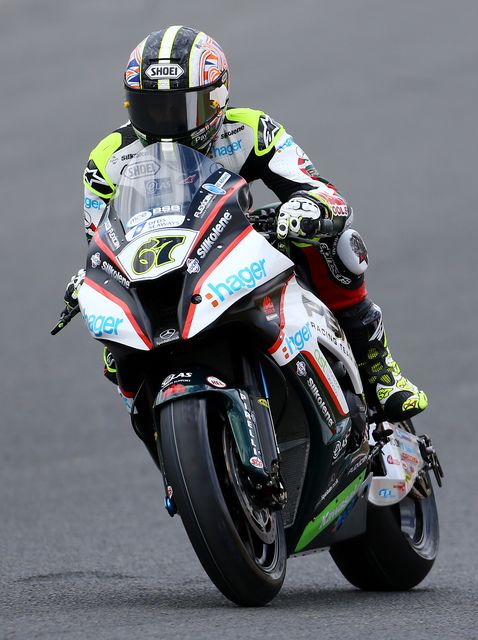Six-time British Superbike champion Shane Byrne has won a High Court claim against three sporting bodies over “catastrophic” injuries sustained in a crash which left him unable to compete.
Mr Byrne collided with a barrier after coming off his Ducati Panigale bike at the Snetterton race track in Norfolk on May 17 2018, leaving him with several fractures and internal injuries.
The 47-year-old sued three bodies – Motorsport Vision Racing, which runs the championship, Motorsport Vision, which owns the track, and the Motorcycle Circuit Racing Control Board, a sport governing body – for damages, claiming that the barrier in place was insufficient and was responsible for his injuries.
The organisations defended the claim, stating that Mr Byrne was at fault for the incident and that the type of barrier was sufficient.
In a judgment on Friday, Judge Peter Blair KC said the bodies were liable for Mr Byrne’s injuries, which were “materially caused” by the collision with the barrier.
The amount of damages to be paid to Mr Byrne will be determined at a later date.
A hearing in London in May was told that the rider, known as Shakey, is the most successful in British Superbike Championship history with 85 race wins but has been unable to compete since the crash.
Shane Byrne, pictured in 2015, claimed the barrier in place was insufficient and was responsible for his injuries (Gareth Fuller/PA)
The incident occurred on a test day for the championship at turn three of the three-mile Snetterton circuit, known as Palmer Corner, while Mr Byrne was on his second lap.
Barrister Kiril Waite, representing the rider, said Mr Byrne jumped from the bike, which came off the track at around 60mph and went across a grass run-off area.
Both the vehicle and Mr Byrne hit a safety barrier, causing him “catastrophic” injuries.
The barrier, which Mr Byrne hit at a speed of between 15mph and 25mph, was known as a “type D additional protective device (APD)”, which consisted of tyres bolted together and was the minimum level of protection required.
Mr Waite told the court that a “type A” device, an air-filled barrier which acts as a shock absorber, was “the appropriate form of protection” and should have been in place at the corner as it was elsewhere on the track, claiming that “the ball was dropped”.
The court heard that type A barriers were installed at the corner soon after the crash.
Malcolm Duthie, for the sporting bodies, said Mr Byrne was at fault for the accident and that his injuries were “not caused by the absence of type A”.
He added that Mr Byrne’s riding was “the substantial and real cause” for the contact with the barrier.
But in a 31-page ruling, Judge Blair said the cause of Mr Byrne coming off his bike was “a foreseeable type of racing incident” and that it was “negligent” not to have type A barriers on the corner of the crash.
He said: “I am satisfied that the incident was not caused by rider error. Mr Byrne was not the author of his own misfortune and he was not contributorily negligent.”
The judge ruled that using type A barriers “would not have created a more serious outcome” than type D, adding that Mr Byrne hit the barrier with “considerable force”.
He said: “The claimant’s evidence was that his falling from the motorcycle to the ground and tumbling towards the barrier did not cause him serious pain or injury.
“He was accustomed to coming off his motorcycle quite a number of times each year and he had from time to time been injured, including fracturing bones.
“His evidence was clear that the excruciating pain came from his impact with the tyre wall.”
He continued: “On a balance of probabilities, I have concluded that he (Mr Byrne) did not sustain any serious injuries as a result of jumping clear of his motorcycle and tumbling towards the barrier.
“The impact with the barrier, however, materially caused the infliction of his injuries.”
He added: “I have reached the view that if the claimant’s impact had been into type ‘A’ APD material, he would not have sustained any of the serious injuries he did sustain on the day.
“Nothing presented in the evidence on behalf of the defendants dissuaded me from that conclusion.”
